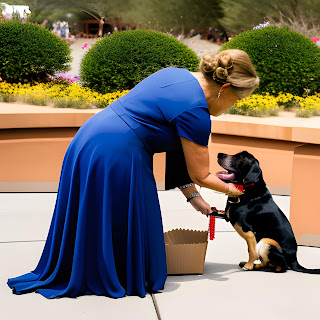Using Positive Reinforcement When Teaching a Puppy or Dog
Positive reinforcement dog training is a highly effective and humane way to train dogs. This method of training relies on rewarding desirable behaviors, rather than punishing undesirable ones. In this article, we will explore the benefits of positive reinforcement dog training, and how it can help you build a strong and healthy relationship with your furry friend.
One of the key advantages of positive reinforcement training is that it is based on science. Studies have shown that dogs respond better to positive reinforcement than to punishment or negative reinforcement. This is because dogs are social animals that thrive on positive interactions with their owners. By rewarding your dog for good behavior, you are reinforcing the bond between you and your pet.
Another benefit of positive reinforcement training is that it is more humane than traditional training methods. Punishing a dog for bad behavior can lead to fear and anxiety, which can damage the dog's mental health and make it more difficult to train. Positive reinforcement, on the other hand, focuses on rewarding good behavior, which encourages the dog to repeat that behavior in the future.
Positive reinforcement training can also be more effective than traditional training methods. By rewarding your dog for good behavior, you are teaching it what you want it to do, rather than simply punishing it for what you don't want it to do. This can lead to faster and more reliable results, as your dog learns to associate good behavior with rewards.
To get started with positive reinforcement dog training, you will need to identify the behaviors you want to reinforce. This could include obedience commands such as sit, stay, and come, as well as good behavior such as not jumping up on people or chewing on furniture. Once you have identified these behaviors, you can start rewarding your dog when it exhibits them.
Rewards can take many forms, including treats, praise, and playtime. It is important to find a reward that your dog finds motivating, as this will encourage it to repeat the desired behavior in the future. You should also be consistent in your rewards, so that your dog learns to associate the behavior with the reward.
It is also important to be patient when training your dog. Positive reinforcement training takes time and effort, but the results are worth it. By building a strong and healthy relationship with your dog based on trust and respect, you will enjoy many years of companionship and happiness together.
Positive reinforcement dog training is a highly effective and humane way to train dogs. By focusing on rewarding good behavior, rather than punishing bad behavior, you can build a strong and healthy relationship with your furry friend. So why not give it a try? Your dog will thank you for it!
Training a puppy can be a challenging task, but using positive reinforcement is one of the most effective ways to do it. The biggest part of training a puppy with positive reinforcement is to reward good behavior. This means that every time your pup does something right, such as sitting or coming when called, you should praise and reward them with treats, toys, or affection. It's important to be consistent with your rewards and to avoid punishing your puppy for bad behavior. Instead, redirect their attention to something positive and reward them when they do it right. Remember to be patient and enjoy the process of bonding with your furry friend. With time, positive reinforcement will help your puppy learn and grow into a well-behaved and happy dog.
Here are some tips on how to use positive reinforcement when teaching your puppy or dog:
1. Start with basic commands: Begin with simple commands such as "sit," "stay," and "come." Use treats or praise as a reward when your dog obeys the command. Be consistent with your commands and rewards to help your dog understand what is expected of them.
2. Use high-value treats: Use treats that your dog loves and finds irresistible. This will make them more motivated to learn and obey your commands. You can use small pieces of cooked chicken, cheese, or hot dogs as treats.
3. Reward immediately: Timing is crucial when using positive reinforcement. Reward your dog immediately after they perform the desired behavior. This will help them make the connection between the behavior and the reward.
4. Be patient: Learning takes time, so be patient with your dog. Don't expect them to learn everything overnight. Break down the training into small steps and gradually build up to more complex behaviors.
5. Use positive language: Use positive language when giving commands. Instead of saying "no" or "stop," use positive phrases such as "good boy" or "well done" to reinforce good behavior.
6. Don't punish bad behavior: Punishing bad behavior can be counterproductive and may cause your dog to become fearful or aggressive. Instead, redirect their attention to something positive and reward good behavior.
In conclusion, using positive reinforcement is an effective and humane way to train your puppy or dog. By rewarding good behavior, you can encourage your dog to repeat it in the future. Remember to be patient, consistent, and use high-value treats to make the training process fun and enjoyable for your furry friend. Happy training!

.jpg)
.jpg)
